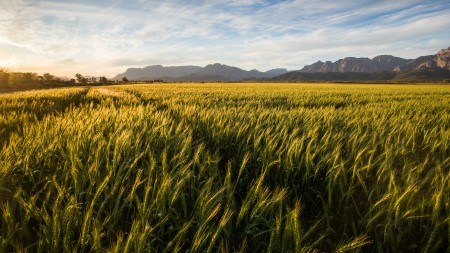Challenges facing the property market have resulted in a flat outlook for the rest of the year, but buyers can get a great deal in the current environment.
Like everyone else, we had hoped that the technical recession would be staved off so that we can get to the next growth phase, but these along with the many factors which influence the economy, are beyond our control, says Samuel Seeff, chairman of the Seeff Property Group.
Land expropriation and other challenges
The challenges are deeper than anticipated on top of recent global and emerging market pressures. Seeff says that the lingering issue of property expropriation has been an added challenge, and in this regard the group welcomes the clarity provided by President Ramaphosa in parliament and in meetings with the UK Prime Minister and Chinese President along with high level meetings with agricultural bodies and stakeholders.
It is important for consumers, sellers and buyers to filter out the noise and misinformation and focus on facts including, says Seeff, that nobody is coming to take your house. It is still safe to invest in property. The president has been clear that there will be no wide-scale expropriation or nationalisation, property rights will be protected, and illegal land grabs will not be tolerated.
Things have been worse
While the property market is in a downward trend, Seeff says that it is by no means the worst market that he has seen in over 30-plus years in property, and it is nowhere near the lows of the 2008 Global Financial Crisis. In 2009, the Seeff Property Group for example experienced a decline in sales of 25% year-on-year. This year, we are only down by 5% year-on-year. Perhaps, he adds, we just tend to measure the market against the boom-phase performance rather than the average performance.
All economies and markets go through phases and what we are seeing now, is all still part of the fall-out of the Zuma-administration and poor economic and political decisions. SA, the economy and property market have always had to deal with challenges, from the political instability of the 1980s to early 1990s, high inflation and interest rates of up to 16%-25% at times.
Seeff adds further that the two main factors which drive the market, is sentiment and the interest rate, which, at 10% is still at some of the best levels in three decades. The banks are also still lending and home loans granted is in fact up year-on-year. The flat price growth also favours buyers.
Buyers and sellers should be realistic
What is important, says Seeff, is that buyers and sellers adjust to the new market realities. Deeds office data shows that thousands of property transactions are concluded monthly. That said, there is no doubt that the buyers’ market is here to stay for the rest of this year and perhaps well into next year. This however, by no means signal that there are no opportunities for sellers, far from it. There is a market for well-priced properties and sellers need to guard against holding out for unrealistic prices, because it will take time for the market to take an upturn.
History has shown that SA property prices have generally tended to outperform economic growth, and there many stories of buyers who will tell you, if only they had bought during a particular time. It is always by looking back that you realise you should have bought, or you should have sold. It is still safe to invest in bricks and mortar and with such a beautiful country, a lifestyle without compare and still very affordable living by international standards, there is no reason to wait, it is time to buy and invest in SA property.
Other times SA property has faced challenges
• 1983-1987 - interest rate range of 20%-25%, you could not sell anything in Camps Bay. Just five years ago, you could still buy in Camps Bay for R6m, now the entry level price is R10 million
• 1992/3 – major threat of a revolution, market was practically dead, for most of the 1990s, interest rate in 18%-20% range, peaking at 25.5% in 1998 – during this time, a new seafront development, Clifton View came onto the market, could not sell a massive 250sqm apartment with two undercover parkings for R1.5, today, you will pay R30 million and a parking alone, will cost you R1.5 million
• 1994 – first democratic elections and new era for SA, but interest rate was still at 16.25% and in fact remained high throughout, peaking in 1998 at 25.5%, despite economic growth in the 2.5%-3.5%
• 1998 – economic slump to just 0.5% growth, picking up to 2.5% in 1999 before economy started its serious uptick towards the 2000-2007 boom phase
• 2002 – prior to 2002, South Africans weren’t buying, but foreigners did, seeing the value of property in Cape Town
• 2000-2007 – economic boom with growth of 4%-5.5% range, yet the interest rate still in the 13%-15% range, only coming down to 10.5% (the current level) in 2005
• 2007 – introduction of NCR (National Credit Regulatory) with massive impact on property and buyers’ ability to obtain finance, banks tightened lending, perhaps too much for a time
• 2008 – Global Financial Crisis (GFC) hits property, marked tanked and interest rate climbed to 15.5% by mid-2008
• 2010 – we thought that the World Cup was going to bring buyers aplenty, well, it did not, save for the odd foreigner, there was no large-scale uptick in luxury home buying
• 2010-2014 – a very slow market recovery despite an interest rate of 8.5%-9.5%
• 2014 – 2017 – property boom which outpaced economic growth, especially in high demand areas, the Cape metro in particular, much of it attributed to the DA government





